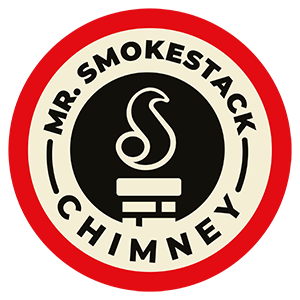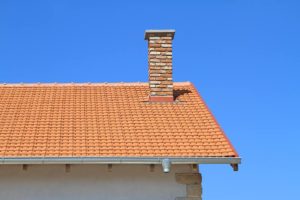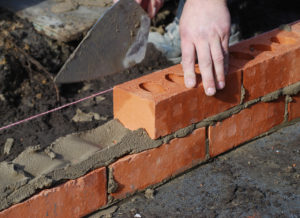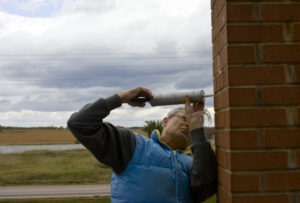While most types of masonry will need repairs at some point, chimneys are particularly susceptible to damage, as their location subjects them to constant exposure to the elements. And because damaged masonry can create conditions for a potential fire or carbon monoxide leak, it should always be repaired or replaced immediately.
Fortunately, we’ve got the lowdown on all things masonry here at Mr. Smokestack, and our crew would be happy to help you out with any damages you may be experiencing. If you’ve noticed any issues in your chimney, count on our CSIA-certified techs to handle it all!
All About Chimney Spalling
Is your chimney crumbling, missing bricks, and showing various signs of decay? This is called spalling, and it’s what occurs when your system isn’t adequately protected.
What’s the main cause of spalling? Short answer: water.
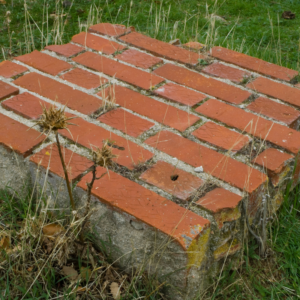 According to the Chimney Institute of America (CSIA), water is your chimney’s number one enemy. Your masonry is surprisingly porous and, when not adequately protected and maintained, exposure to water will cause your bricks and mortar to break down significantly. In addition to this, water causes surrounding woodwork to rot, mold and vegetation to grow, and rust to form on any metal components. Water can even weaken the mortar joints between the terra cotta flue liner tiles, causing flue tiles to break off, fall down, and potentially clog the inside of the flue.
According to the Chimney Institute of America (CSIA), water is your chimney’s number one enemy. Your masonry is surprisingly porous and, when not adequately protected and maintained, exposure to water will cause your bricks and mortar to break down significantly. In addition to this, water causes surrounding woodwork to rot, mold and vegetation to grow, and rust to form on any metal components. Water can even weaken the mortar joints between the terra cotta flue liner tiles, causing flue tiles to break off, fall down, and potentially clog the inside of the flue.
But the worst damage is typically caused by the freeze-thaw process. When water soaks into your bricks and mortar, it will eventually freeze and expand once temperatures drop. This expansion puts pressure on your brickwork, causing it to crack and break, which then provides more spaces for water to enter when temperatures rise again. And when this happens repeatedly throughout a season (which it usually does), serious damage can occur.
How is spalling repaired? The best way to ensure spalling is repaired safely and effectively is to hire a certified and trained team of experts to get the job done right. They’ll use specialized techniques, like tuckpointing, to repair the spalling, then take appropriate measures to prevent it from happening again later on.
Tuckpointing & Brick Replacement
One effective way we can restore your masonry is through a process called tuckpointing.
What is tuckpointing? Tuckpointing is the process of replacing old, damaged mortar with sturdier, new materials. The damaged mortar is removed evenly and consistently, after which the new mortar (meticulously mixed to match the old in strength, texture, color, and consistency) is added, restoring your system back to normal again.
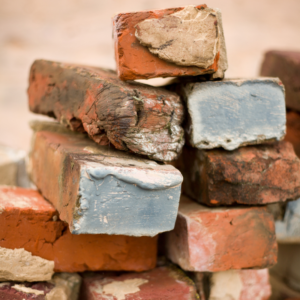 And, no, DIY isn’t a good option here. It’s not enough to simply add some caulk or a basic mortar mix to the damaged areas. Only a skilled professional should repoint a chimney, as the work requires an experienced hand. If improperly done, your system will be weakened significantly.
And, no, DIY isn’t a good option here. It’s not enough to simply add some caulk or a basic mortar mix to the damaged areas. Only a skilled professional should repoint a chimney, as the work requires an experienced hand. If improperly done, your system will be weakened significantly.
Trained sweeps will ensure the existing mortar joints are cut to an appropriate depth and are packed correctly with the new mortar. They’ll also ensure that only damaged mortar is removed, without causing any additional damage throughout the process – removing even a smidge too much can further compromise the structure of your chimney.
Finally, improperly performed tuckpointing jobs can be quite an eyesore. When your chimney is the main focal point of your home’s exterior, investing in seamless repairs jobs is a must!
And if the damage is in your firebox? There are three general approaches for repairing damaged firebox mortar. The first approach involves scraping out and repointing the joints between the bricks, and the second involves applying a thin coat of refractory mortar over the entire floor of the firebox.
In these cases, we’ll need to use refractory mortar, as opposed to a more traditional Portland-cement-based mortar that is used elsewhere in home construction. The refractory mortar holds up better to the intense cycle of heating and cooling that occurs in a firebox.
The third approach to firebox repairs involves removing damaged bricks and replacing them with cast-ready refractory cement. No matter which approach is taken, though, trusting an expert is a must. Unqualified techs often try to cut corners and use inappropriate materials in hopes of saving themselves some money throughout the process.
That’s why we urge folks throughout the Triangle and Central North Carolina communities to turn to us. Our experts always evaluate the makeup of the existing mortar to ensure nothing is overlooked. If needed, your bricks and mortar will be carefully removed, then replaced for a seamless, beautiful look – like your system was never damaged to begin with!
Spotting Masonry Damage
Needless to say, protecting your masonry chimney from water penetration is one of the most important responsibilities you have as a homeowner. So, what can be done on your part? Well, to keep minor masonry chimney damage from worsening, we suggest learning the common signs of damage. That way you can call in a sweep to have it repaired as soon as possible.
Here’s what to watch for:
- Cracked, Loose & Missing Bricks/Mortar: If you’re spotting broken/missing bricks and crumbling mortar, then you’re system definitely needs some professional attention – and fast. These gaps and cracks allow even more water to enter the chimney, which can then lead to serious (and costly) structural problems. The majority of this type of damage occurs during the winter (cue the freeze/thaw process), so be on extra high alert during the cooler months.
- Discoloration on the Chimney’s Exterior: One early sign of water penetration is discoloration on the sides of a masonry chimney. If you notice white stains, for example, the problem is efflorescence, which is crystalline salt deposit left behind from condensation. You might also notice reddish-brown stains (which indicates rust and corrosion), green stains (indicating vegetation growth), or black or brown soot stains.
- Water Stains on Your Ceiling & Walls: As water seeps through vulnerable spots in your masonry, you may notice issues inside of your home, too. Many notice water stains on the walls and ceiling near their fireplace, and you may clock sagging ceilings or peeling wallpaper, too. Not only is this unsightly, but it can eventually lead to the rotting of adjacent woodwork.
Avoiding Further Damage
So, how can all of these issues be avoided once repairs are administered?
We strongly urge our customers to invest in waterproofing services, which will safeguard your system against harmful moisture. The products we use to waterproof your chimney are specially formulated and vapor-permeable, ensuring your chimney can vent out necessary vapors (and formerly absorbed moisture), while still offering a strong shield against any incoming water at the same time.
Call Us Today
It’s our goal to ensure our customers around the Raleigh and Durham area stay safer and more satisfied with every passing season. If you see visible signs of masonry damage throughout your chimney or fireplace – or if you haven’t had a professional inspection completed in the last 12 months – give our experts a call at 919-747-1859 or reach out online.
We’d be happy to get started on your chimney repairs and maintenance right away!
